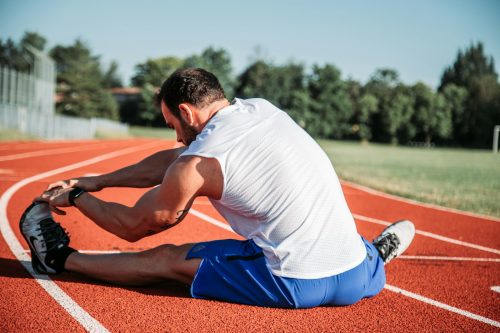If you suffer from pain related to a herniated disc, you may be wondering if you are making mistakes that are making your condition worse. In this article, we will show you how Mathieu, 43, corrected three major mistakes that were making his herniated disc pain worse. After working with him, his pain decreased by more than 50% in just four weeks.
By reading this article, you will discover how to avoid these mistakes and learn concrete strategies to relieve your symptoms.
In this article, we will explain:
- Common Mistakes That Make a Herniated Disc Worse
- How to Strengthen Your Abs Safely
- Why use the lumbar belt can be harmful
- Exercises That Can Actually Relieve Your Pain
Read on to understand how these simple changes can make a big difference in your recovery.
Important points to remember
- Not working your abs is a common mistake for people with herniated discs.
- Prolonged use of the lumbar belt may weaken supporting muscles.
- A stagnant exercise routine without regular reassessment can prevent progress.
- Working in functional positions (sitting, standing) helps improve tolerance to prolonged postures.
- Foot orthoses may be beneficial in some cases of herniated disc.
1. Mistakes that make your herniated disc worse
Mathieu had been suffering from lower back pain for 15 years, aggravated by a herniated disc L4-L5. He had tried various therapies: physiotherapy, osteopathy, medication, but without lasting results.
After a thorough assessment, we identified three errors that were making his pain worse:
- Mistake #1: Not working your abs.
Mathieu wrongly believed that working his abs would make his hernia worse. However, the abdominal muscles, particularly the transverse abdominis, play a key role in stabilizing the spine. By neglecting to strengthen them, he was leaving his back vulnerable to injury. - Mistake #2: Overuse of the lumbar belt.
Although this belt may provide temporary support, prolonged use prevents the lower back muscles from strengthening, which can ultimately make pain worse. - Mistake #3: A Stagnant Exercise Routine.
Mathieu had been doing the same stretching exercises for months, without progression or reassessment. This lack of variety and active strengthening was limiting his progress.
2. How to strengthen your abs without making your hernia worse
Contrary to popular belief, working the abs should not be avoided. It is essential to do it correctly, with suitable movements.
With Mathieu, we started with gentle core exercises, slowly progressing towards more complex movements like bends.
Strengthening the abdominal muscles, especially the transverse muscle, helps to stabilize the column and reduce pressure exerted on the intervertebral discs.
3. Gradual weaning from the lumbar belt
Wearing a lumbar belt all the time eventually weakens the muscles that should naturally support the back. We gradually reduced Mathieu's use of the belt, using it only for new exercises or when the pain was more intense.
This allowed his muscles to regain their protective role and strengthen his core naturally.
4. The importance of varying exercises and adapting them to your daily life
If you have a herniated disc, it is essential to do exercises in a functional position, that is, in postures that you adopt daily.
With Mathieu, we introduced exercises in standing and sitting positions, using a gym ball to improve stability and tolerance to prolonged postures.
By diversifying his routine, he was able to increase his tolerance to static positions, allowing him to sit or stand longer without pain.
5. The impact of foot orthoses on lower back pain
In Mathieu's case, flat feet contributed to poor alignment of the knees and pelvis, increasing tension in lower back. After a consultation with a podiatrist, we introduced foot orthoses.
These insoles improved the alignment of his lower limbs and reduced stress on sa lumbar spine. Although orthotics are not always necessary for everyone, they can be an effective solution in some cases.
For further information: Free 21-day program against back pain
To help you resume physical activity safely, I invite you to try my 21 day program against back pain, 100% free.
👉 Sign up here for the 21 Day Back Pain Program
For a more comprehensive approach, discover Lombafit Studio, a platform dedicated to guided exercises to relieve and prevent back pain.
👉 Discover Lombafit Studio here
References
Michel Benoist (2002). Natural history of lumbar disc herniation and radiculalgia. https://doi.org/10.1016/S1169-8330(02)00302-2
https://espace.etsmtl.ca/id/eprint/96
My name is Anas Boukas and I am a physiotherapist. My mission ? Helping people who are suffering before their pain worsens and becomes chronic. I am also of the opinion that an educated patient greatly increases their chances of recovery. This is why I created Healthforall Group, a network of medical sites, in association with several health professionals.
My journey:
Bachelor's and Master's degrees at the University of Montreal , Physiotherapist for CBI Health,
Physiotherapist for The International Physiotherapy Center


